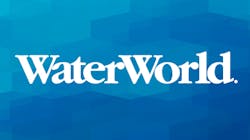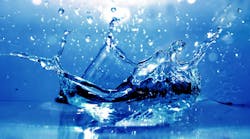As we were putting this issue of WaterWorld to bed, President Biden unveiled a more than $2 trillion infrastructure package, which includes $111 billion for water infrastructure over the next 10 years.
The American Jobs Plan calls for $56 billion in grants and low-cost flexible loans to states, tribes, territories, and disadvantaged communities across the country for upgrading and modernizing drinking water, wastewater and stormwater systems, and includes $10 billion in funding to monitor and remediate per- and polyfluoroalkyl substances (PFAS) in drinking water systems. Additional resources for small and rural water and wastewater utilities are also part of the package.
Among the plan’s more ambitious goals is the 100 percent elimination of lead pipes and service lines in the nation’s drinking water systems, calling on Congress to invest $45 billion in the Environmental Protection Agency’s Drinking Water State Revolving Fund and in Water Infrastructure Improvements for the Nation Act (WIIN) grants.
Following the White House’s announcement of the plan, many industry organizations applauded the President for his renewed and long-overdue focus on water and wastewater infrastructure.
But is the amount allocated to the water sector enough?
EPA has estimated that maintaining and improving the nation’s wastewater and drinking water infrastructure over the next 20 years will realistically cost about $750 billion. Additionally, addressing lead contamination is complicated because the total number of lead service lines in the country is unknown (EPA estimates there are between 6.5 million and 10 million lead service lines around the country, with the average replacement cost at about $4,700 per line).
Though the numbers are off, the plan is a step toward closing the infrastructure funding gap, a burden that water utilities have been shouldering for far too long. Additionally, the infrastructure renewal efforts will bring thousands of jobs to our industry.
As we begin our return to normal following the devastating effects of the coronavirus pandemic, many utilities, having suspended shutoffs due to late or non-payments, are thinking about how to recoup lost revenue while maintaining infrastructure at the same levels as before. As outlined on page 10, the San Francisco Public Utilities Commission used the pandemic as a call to assist ratepayers in need, expanding its existing customer assistance program to include citizens whose income was negatively affected.
“We take great pride in being able to extend a helping hand to our customers struggling to cope with this terrible pandemic,” SFPUC’s acting General Manager Michael Carlin writes, “but we must be realistic about the limitations we face. These financial assistance programs are not sustainable — not for the SFPUC or for the hundreds of other utilities across the nation facing similar situations.”
SFPUC and other water utilities are advocating for more federal funding, similar to the Low Income Home Energy Assistance Program (LIHEAP), which provides eligible low-income households with help paying their heating and cooling energy costs, bill payment assistance, energy crisis assistance, weatherization and energy-related home repairs. While water and wastewater utilities across the country — including SFPUC — have developed their own customer assistance programs, no federal program exists at this time for our sector.
While there is still a lot of work to be done, the Administration’s latest plan is a good sign that Washington is getting serious about water infrastructure — a priority I think you’ll agree is long overdue. Thanks for reading! WW




